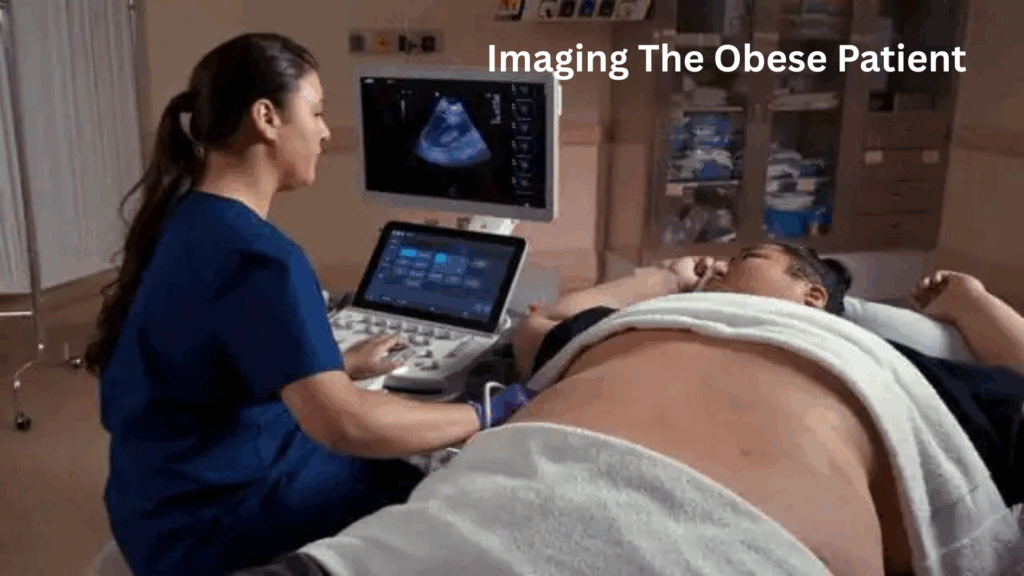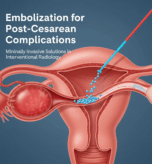
Introduction: A New Hope in The Fight Against Obesity
Obesity is a growing global health issue, affecting millions of people every year. Traditional treatments like lifestyle changes, medication, and surgery don’t always provide long-term success. But now, radiology offers a promising new solution- bariatric embolisation.
This minimally invasive procedure is giving patients a new way forward—one that is safe, effective, and has fewer risks than surgery.
What Is Bariatric Embolisation?
Bariatric embolisation is a non-surgical procedure performed by interventional radiologists. It involves blocking the blood supply to the part of the stomach that produces the hunger hormone ghrelin. As a result, patients feel less hungry and can better control their appetite.
Unlike bariatric surgery, this method doesn’t involve cutting or removing any part of the stomach. That means less recovery time, fewer complications, and a quicker return to daily life.

How the Procedure Works
Here’s a simple breakdown of the process:
- A small catheter is inserted through a tiny incision in the groin or wrist.
- The radiologist guides the catheter to the arteries that feed the stomach.
- Tiny particles are injected to block blood flow to the hunger-producing area.
- The body naturally reduces hunger signals, making it easier to eat less.
The entire procedure usually takes 1–2 hours, and most patients go home the same day.
Why Choose Bariatric Embolisation For Treating Obesity?
There are many benefits to choosing this innovative treatment:
- Minimally Invasive – No large incisions or scars
- Reduced Appetite – Targets the root of hunger hormones
- Quick Recovery – Back to normal within days
- Lower Risk – Fewer complications compared to surgery
- Long-Term Results – Sustainable weight loss when combined with healthy habits
Additionally, patients who aren’t eligible for traditional bariatric surgery may still qualify for embolisation.
Who Is a Good Candidate for Treating with Radiology?
Bariatric embolisation is ideal for people who:
- Are affected by obesity (BMI ≥ 30)
- Have not achieved success with diet and exercise
- Want to avoid or are not candidates for surgery
- Are you looking for a medically supervised, less invasive treatment
A consultation with an interventional radiologist can help determine if you’re a good fit.
Is It Safe? What About the Side Effects Of Radiology?
Yes, the procedure is generally safe. As with any medical treatment, there may be minor side effects such as:
- Nausea or mild stomach pain (temporary)
- Low-grade fever
- Fatigue for a few days
Serious complications are rare, especially when performed by a trained radiologist in a licensed medical facility.
Current Evidence: What Research Says
There are multiple early trials and animal studies indicating promise:
- A porcine model (animal study) showed marked suppression of ghrelin and reduced weight gain in embolized animals compared to controls. (Scholars@Duke)
- Systematic review in humans: Six non-randomised prospective studies involving nearly 50 subjects observed about an 8.1% ± 1.5% weight loss and about 8.85 kg ± 1.24 kg over ~12 months. Adverse effects were limited and mostly mild. (Johns Hopkins University)
- Clinical pilot studies (ongoing) are further evaluating safety, long-term outcomes, and impact on comorbid conditions. (PMC)
Researchers are also working to identify which patients benefit most, the optimal technique, particle size, and how to minimise risks. (Endovascular Today)
The Future of Obesity Treatment
An over weight person continues to challenge public health systems worldwide, bariatric embolisation is quickly gaining attention. More clinical trials and real-world results show it can be a game-changer in non-surgical weight loss.
With continued advancements in radiology, this approach could soon become a standard option for managing overweight, giving people more control over their health and future.
Conclusion: A New Path to a Healthier You To Fight With Obesity
If you’ve struggled with obesity and want a less invasive, effective alternative to surgery, bariatric embolisation may be the solution you’ve been waiting for.
Talk to a healthcare provider or interventional radiologist today to explore your options. A healthier, more confident life could be just one step away.
Key Takeaways
- Obesity affects millions, but new treatments are emerging
- Bariatric embolisation is a non-surgical, low-risk option
- It works by reducing hunger at the hormone level
- Ideal for people who want a safer, faster recovery
- Offers long-term weight loss when paired with healthy habits
External Links & References To Read
- Weight Loss after Left Gastric Artery Embolisation: A Systematic Review and Meta-Analysis, Journal of Vascular and Interventional Radiology. (Johns Hopkins University)
- EMBIO trial protocol: Left Gastric Artery Embolisation for Weight Loss, PMC article. (PMC)
- Bariatric Embolisation for Suppression of the Hunger Hormone (animal model), Radiology. (Scholars@Duke)
New Treatment For Obesity Promotes Safely Controlled Weight Loss – Hopkins Medicine. (Johns Hopkins Medicine)
FAQs About Obesity
1. What are the 4 types of obesity?
The four types of obesity include diet-related, genetic, secondary (due to medical conditions), and lifestyle-related obesity. Each type has different causes and may need different treatments.
2. What are the 5 main causes of being overweight?
The main causes of obesity are poor diet, lack of physical activity, genetics, certain medical conditions, and mental health issues like stress or depression.
3. What are the 5 risks of being overweight?
Obesity increases the risk of heart disease, type 2 diabetes, high blood pressure, certain cancers, and joint problems like osteoarthritis.
4. Why is it difficult to treat obesity?
Overweight is hard to treat because it often involves complex factors like genetics, habits, emotions, and environment. Long-term change in lifestyle is also challenging for many people.
5. What is the danger zone for an obese person?
A Body Mass Index (BMI) of 30 or above is considered obese. A BMI of 40 or more is in the danger zone, also called morbid obesity, with higher health risks.






